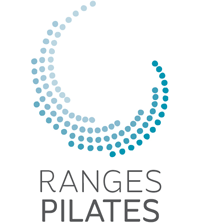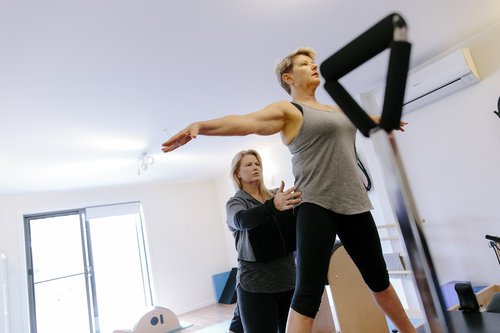Pilates and the pelvic floor
Did you know that the pelvic floor is one of the most important parts of the muscles that make up your ‘core’. The other muscles are the Transversus Abdominus (deepest abdominal layer), the Multifidus (deep spinal stabiliser) and the main breathing muscle, the diaphragm. At Ranges Pilates we have a strong focus on the Pelvic Floor.
Pilates is a great way to strengthen your Pelvic Floor, but is has to be done correctly. If you have weakness in your pelvic floor and do traditional Pilates exercises such a Hundreds, and Single Leg Stretch, where both legs are lifted as well as your head, you put considerable downward force on your pelvic floor, possibly making it weaker.
Some think to strengthen their ‘core’ all they need to do is just pull in the abdominals, bracing them with exercises such as Plank or Sit Ups; you in fact can put more pressure on your pelvic floor, potentially leading to pelvic floor dysfunction. If you have a weak Pelvic Floor, you could have incontinence, back pain and in a worse case pelvic organ prolapse.
And did you know that 4.8 million Australians have some degree on incontinence? Up to 37% of women and 13% of men have urinary incontinence. 70% of people do not seek help for urinary leakage. Incontinence can be faecal or urinary. (source Continence Foundation of Australia) Many people think small leakage is normal, it is not. Incontinence can be any of the following:
Do you leak even a small amount if you cough, laugh or sneeze?
Do you wake up frequently during the night to use the toilet?
Are you worried you might lose control of your bladder or bowel?
Are you terrified of the idea of skipping or using a trampoline?
Do you leak if you play sport, exercise or lift something heavy?
Do you drink less water in case you need to use the toilet during the day?
Do you leak if you change positions such as getting up form the ground?
Do you use pads “just in case”?
Do you leak before you get to the toilet because you can’t quite hold on long enough?
Keeping the pelvic floor strong is extremely important to control incontinence and avoid the risk of a pelvic organ prolapse. There are a number of risk factors and you don’t need to have had children, women who have not given birth can still have pelvic floor issues. Men can also have continence problems.
The risk factors include:
Pregnancy including pre and post-natal women
Younger women who have had children
Menopause
Obesity
Urinary tract infections
Constipation
Hysterectomy
Prostatectomy (removal of all or part of the prostate)
History of respiratory conditions involving chronic coughing
Certain health condition such as MS, arthritis, diabetes, prostate problems
Lifting heavy weights
Doing high impact exercises, such as running, jumping, burpees,
One of the questions we always ask at Ranges Pilates, when you have your Initial Consultation, is about incontinence. It is incredibly important not just for continence but for back health as well. Many people are ashamed and don’t want to talk about it. There are many solutions to help strengthen the Pelvic Floor. We ensure that when engaging your ‘core’ correctly, that you are not bracing and putting undue pressure on the Pelvic Floor. And we don’t want people to overload their abdominals before they are strong enough.
If you find you have incontinence and it is not improving with pelvic floor exercises, an appointment with a qualified Pelvic Floor Physiotherapist would be beneficial; where they can make sure you are recruiting your pelvic floor correctly or speak to your GP.
For more information Continence Foundation of Australia is a great resource. http://www.continence.org.au/

